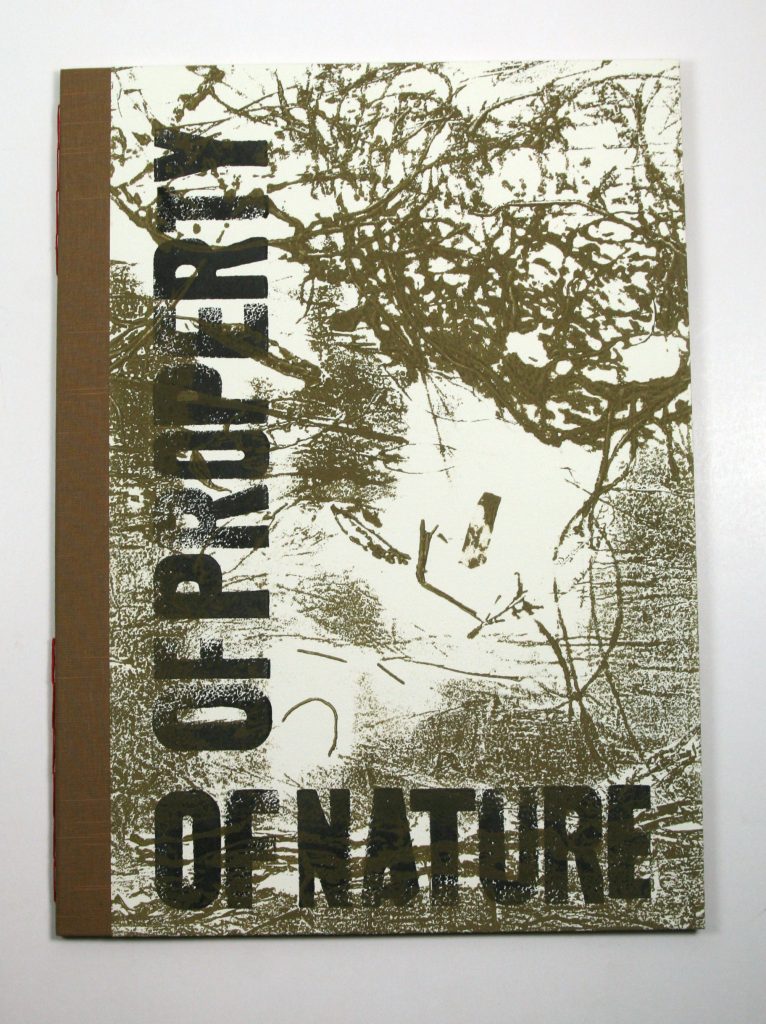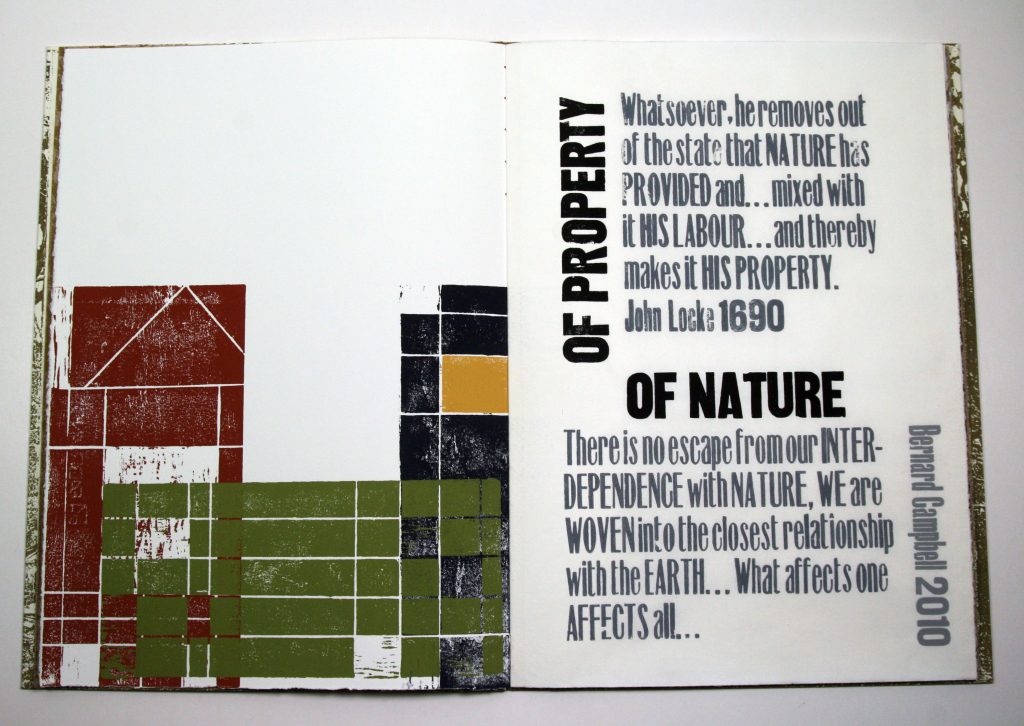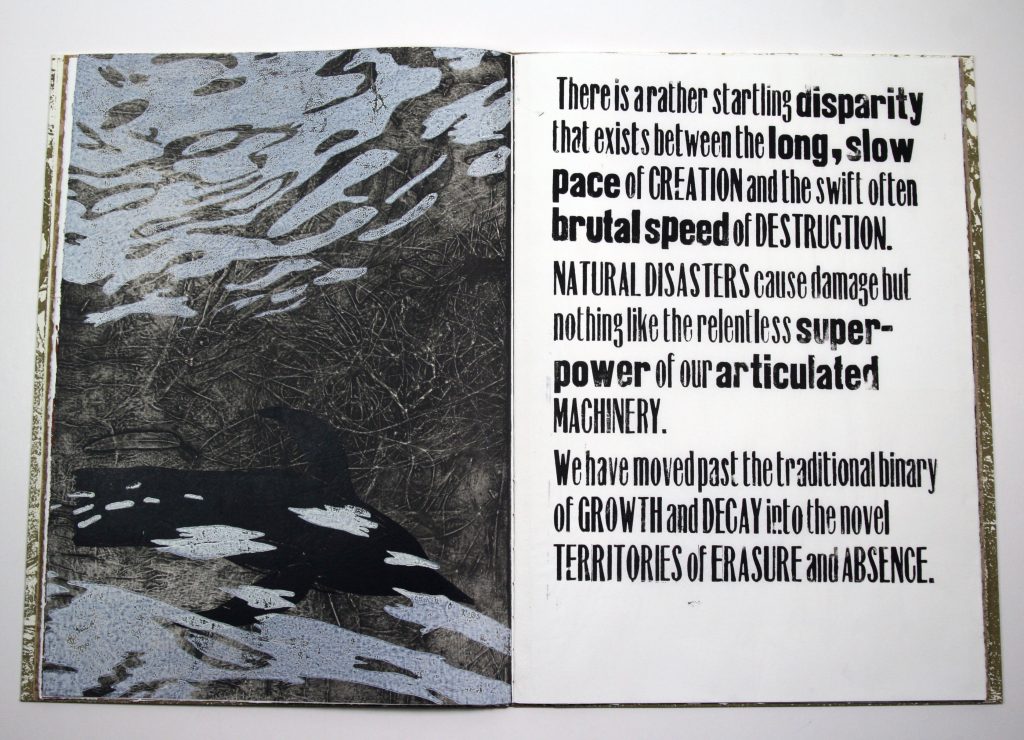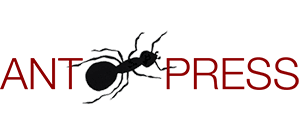BOOKS
Earth Sky
2015
I took the photos in the Royal Botanic Gardens in Sydney and the cover shot on Sydney Harbour. The short text passage comes from Plant-Thinking: a philosophy of vegetal life by Michael Marder. Marder, thinking beyond earlier philosopher’s makes the point that life on earth is an expression of the relationship between earth, the ground beneath our feet and the sky above our heads. Plants are key to this expression and we can exist because of this rich green life.
In the edition of this book all the individual books have different images though they all have an image of sky, an image of leaves and an image of roots. The images come from another book which was never finished, only printed as a b/w proof at Officeworks.
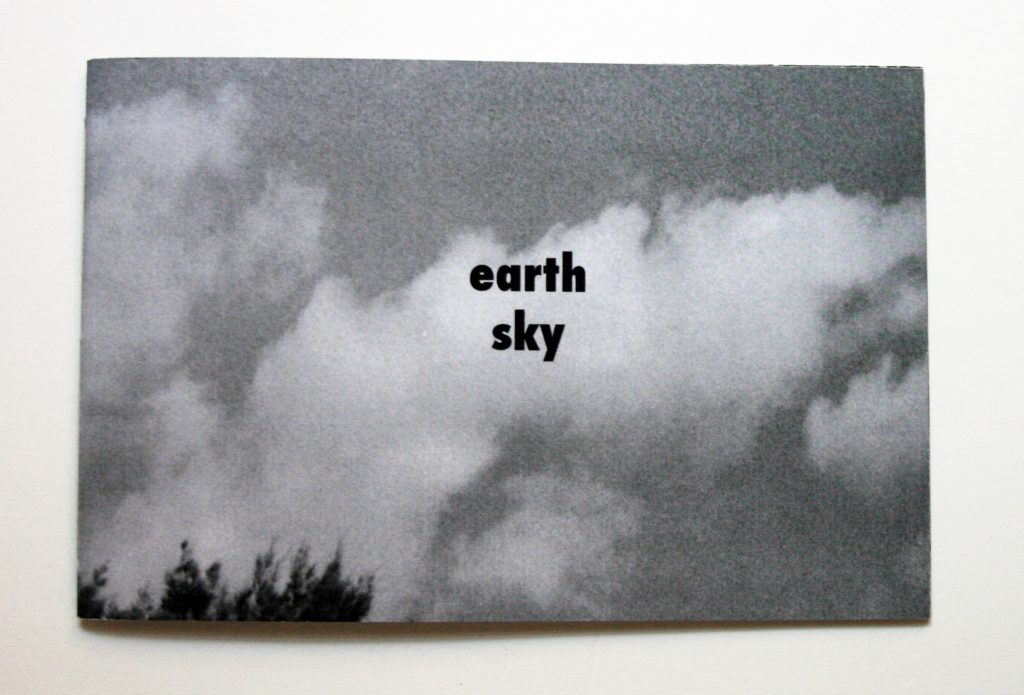

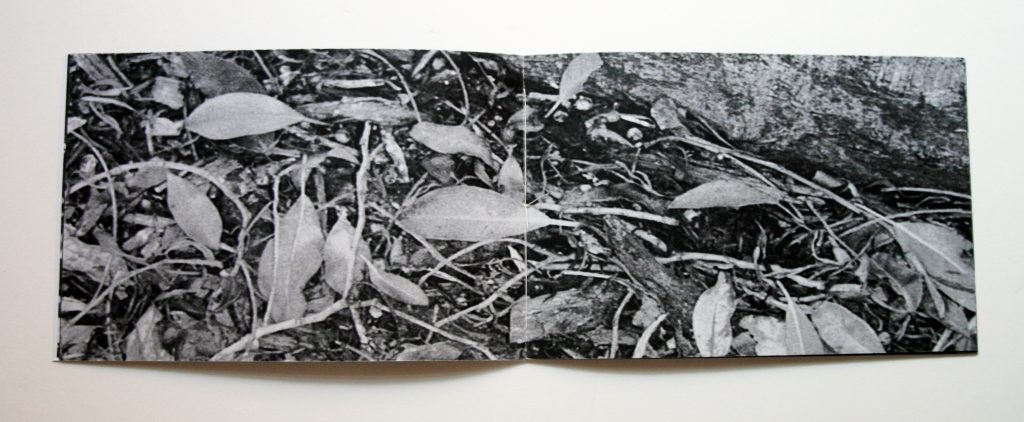

Urban wilderness/ A Common Sense of Nature
2015
Often we think of the “environment” being somewhere out there far away in national parks and nature reserves yet in Sydney there are wonderful pockets of natural environment throughout the inner city. Yes, they are reserves and they are protected in national park but they are here right under our noses. In Urban Wilderness I record some of these places but juxtapose a parallel ‘narrative’, A Common Sense of Nature which shows the inadequacy of language to express the true complexity and diversity of the environment. The banality of a statement such as “nature is green” or “nature is pretty” matches the repeating floral graphic and at the same time creates a foil to the diversity of “nature” captured in the photos.
The photos in this book were all taken within a 12 km radius of my studio in Stanmore, an inner city suburb 6 kms from the centre of the Central Business District (CBD) of Sydney, a city of over 4 million people. Sydney, situated on a baroquely detailed harbour, had to allow the landscape to describe its form. Pockets of native vegetation remain in the tight corners of bays and on the steep slopes of the harbour’s geological formations. All of it has been maintained through bush regeneration, the suppression of weeds and in some places by rehabilitation projects returning native habitat which had been removed. The maintenance of these areas and similar projects throughout the Sydney Basin are about improving the ecology and biodiversity of greater Sydney. While there is more wilderness than one would suspect so close the centre of a major city hub, at the same time, the acres between them speak of a vast devastation of another place.

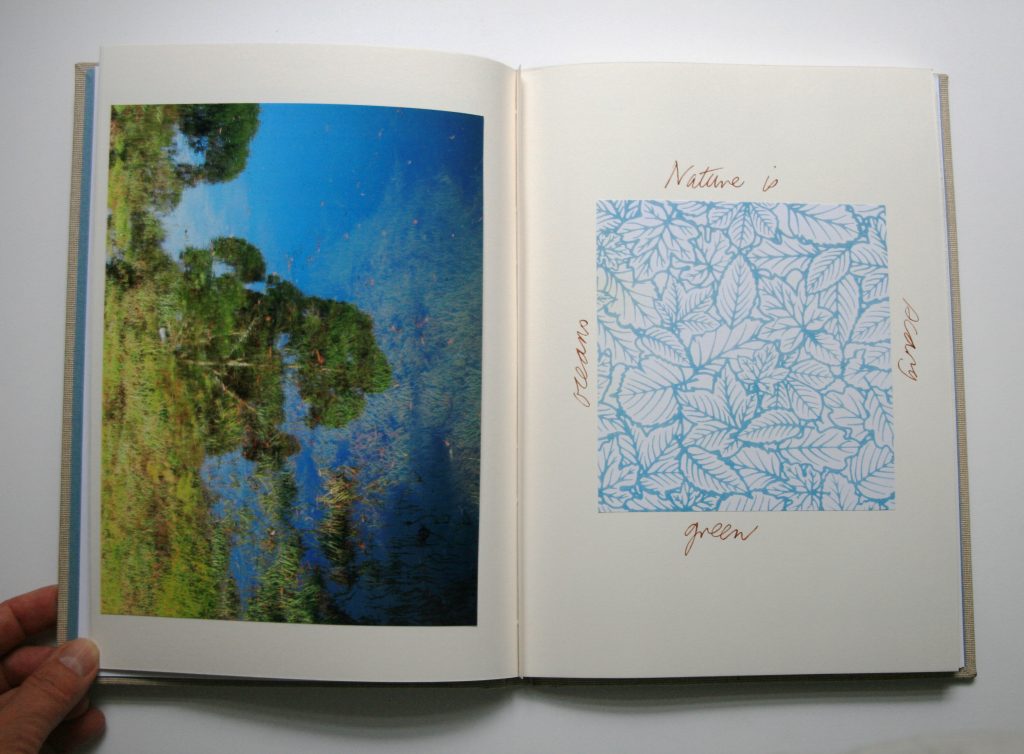

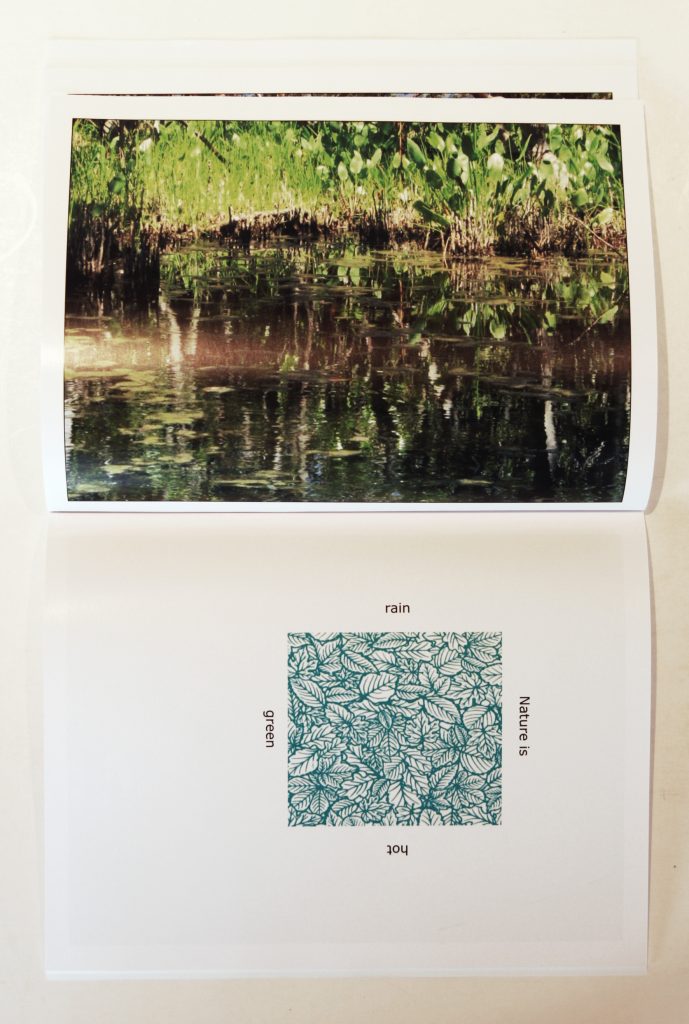
From the City into Trees
2015
“The ecosystems that naturally renew themselves, and which supply us with the huge range of economically valuable services and benefits, are sometimes seen as analogous to financial wealth, and are increasingly referred to as ‘natural capital’. That natural capital, like financial capital, can yield dividends (fertile soil, flowing rivers, fish catches, disease control and carbon capture). But that kind of prudent behaviour that spends only dividends while saving capital presently eludes us, and in may cases we have instead embarked on a short-term spree, whereby the capital itself is being blown.” Tony Juniper, What has Nature ever done for us?
“I spoke once to a climate-change scientist about the subject of abandonment. The study of her science had changed her perception of time, she said, and of the relevance of human beings within history. Though we now among the dominant species, she said, our age will pass, and our material legacy—unthinkable though it now is to imagine it vanished—will be absorbed by the land, becoming all but imperceptible.
“Eventually, very much later than this, she said, the sun will swell to become a red giant, swallowing up all the vast empty space as far as the earth. Imagine that, she said, an ancient red sun, swollen and massive, charring the earth.” Robery MacFarlane, The Wild Places



Night-walker
2015
“Night has been banished, so have the cold, the wind, and the stars. They have all been neutralised: the rhythm of life itself is obscured. Everything goes so fast, and makes so much noise, and men hurry by without heeding the grass by the roadside, its colour, its smell… But what a strange encounter then is that between man and the high places of his planet! Up there he is surrounded by silence. If there is a slope of snow steep as a glass window, he climbs it, leaving behind him a strange trail.” Gaston Rebuffat, Starlight and Storm
“Our disenchantment of the night through artificial lighting may appear, if it is noticed at all, as a regrettable but eventually trivial side-effect of contemporary life. That winter hour, though, up on the summit ridge with the stars falling plainly far above, it seemed to me that our estrangement from the dark was a great and serious loss. We are, as a species, finding it increasingly hard to imagine that we are part of something which is larger than our own capacity. We have come to accept a heresy of aloofness, a humanist belief in human difference, and we suppress wherever possible the checks and balances on us—the reminders that the world is greater that us or that we are contained within it. On almost every front, we have begun a turning away from a felt relationship with the natural world.” Robert MacFarlane, The Wild Places



Metropolis
2016
The work suggests the city as an ephemeral place. We think of cities as permanent, enduring, and in relation to the life of a single individual they are but cities rise, metamorphose and eventually fall. They hold a history of multiple pasts, multiple narratives; some which are silenced, others which are celebrated. In this book, I wanted to show the past literally lying beneath the city.
The two “hidden” texts are from the past. One, a poem ‘Visit of Hope to Sydney Cove, near Botany Bay’, from the introduction pages of The Voyage to Governor Phillip to Botany Bay (first published 1789), in which Hope joyously calls forth “broad streets, bright canals, the proud arch … o’er the cultured land” and the other from Gov. L. Macquarie’s papers (colonial secretaries in-letters, April 9 1816) on action to be taken against local indigenous tribes in the Windsor district, which led to the Appin massacres of 17 April 1816. They texts face each other.
The city is seen from a distance. It appears to be exposed to the onslaught of the environment. Perhaps nothing is more enduring than the ground on which a city stands.
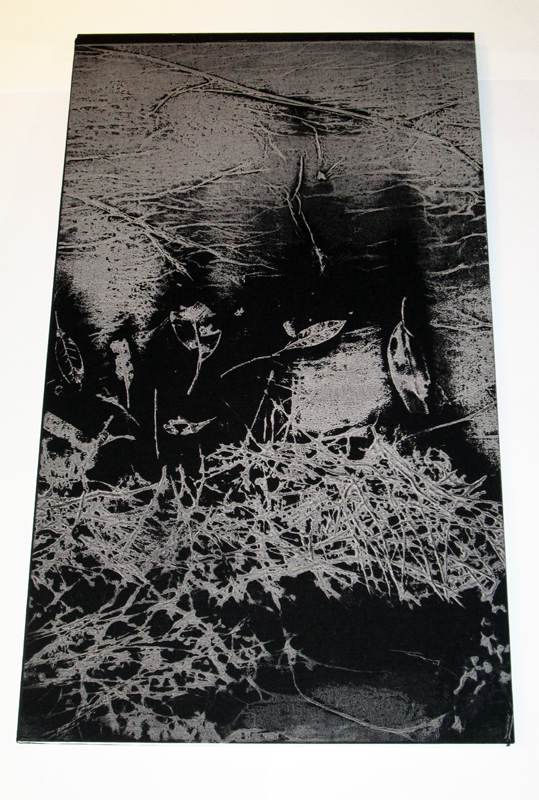

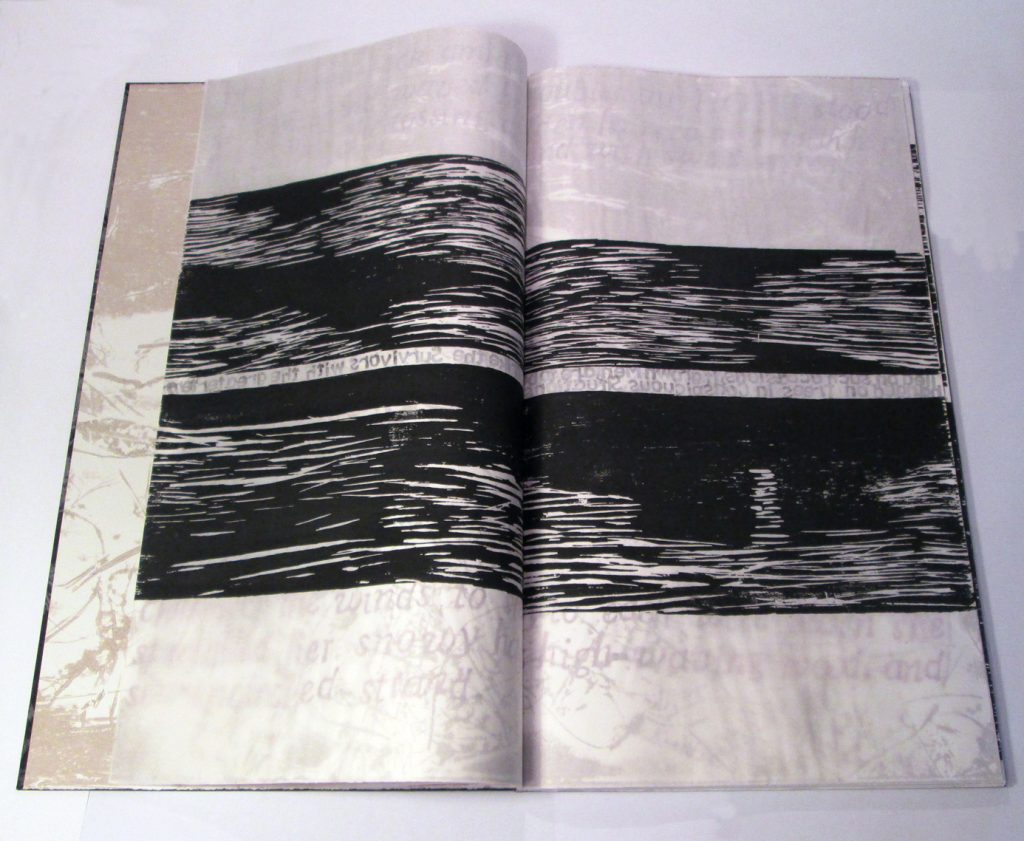
Of Property Of Nature
2021
Dealing with environmental issues is core to my bookarts practise. The main images in this book are extras from the edition made for the Warringah Print Studio collaborative project Natural Collections, looking at endangered species in the Northern Beaches of Sydney.
The problems of species loss and habitat destruction are not specific to the Northern Beaches but Australia wide, world wide. In the text I draw the readers attention to the dire consequences of our actions as a cultural juggernaut. The work connects the local and the global.
The title of the work comes from the two quotes, included on the title page, one from John Locke (philosopher) and the other from Bernard Campbell (anthropologist), quoted by David Suzuki (scientist). Written more than 300 years apart they highlight a shift in thinking needed in our relationship to the planet and connection with Nature.
